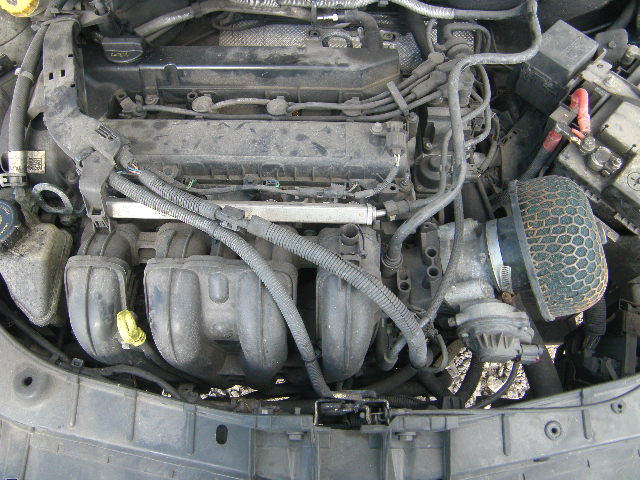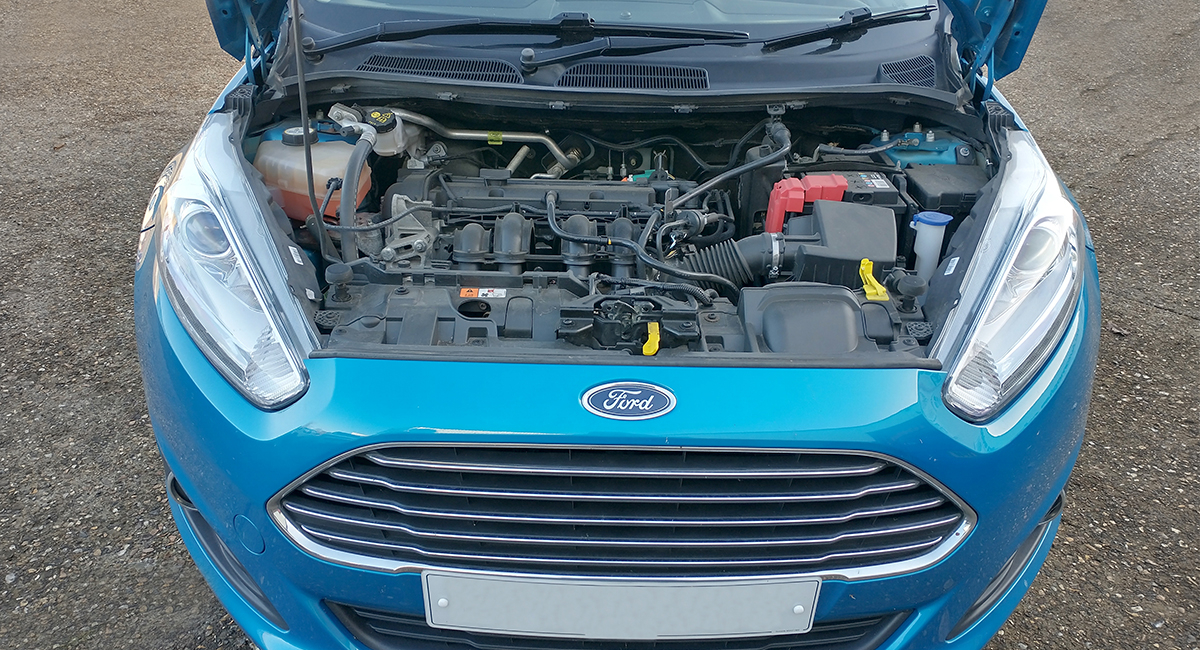Common Issues with the Ford Fiesta Engine and How to Fix Them
Wiki Article
The Future of Engines: Advancements Driving Sustainable Power Solutions
As the vehicle industry navigates the vital change towards sustainability, the future of engines is increasingly defined by groundbreaking technologies. Electric engine improvements, alongside promising developments in hydrogen gas cells and biofuels, are reshaping the landscape of power options. The emergence of hybrid systems further complicates this development, offering both opportunities and challenges to reduce emissions successfully. Paired with the integration of man-made knowledge in engine design, these technological strides increase crucial questions about their long-lasting feasibility and effect on traditional paradigms. What might this imply for the market and customers alike?Electric Engine Dope
The evolution of electrical engine developments signifies a pivotal change in the automobile and aerospace industries, driven by the immediate demand for sustainable options to nonrenewable fuel sources. This change is characterized by substantial developments in battery technology, power electronic devices, and electric motor design, which collectively improve the efficiency and performance of electrical engines.Current innovations have actually resulted in the development of lighter, extra energy-dense batteries, such as lithium-silicon and solid-state batteries, which promise longer arrays and much shorter charging times. Additionally, improvements in electric motor performance, such as the use of permanent magnets and advanced cooling systems, make it possible for electrical engines to run successfully under differing problems. These improvements not just boost automobile performance yet also add to a reduction in total power usage.
Furthermore, the combination of sophisticated software application algorithms has actually maximized energy management in electric vehicles, enabling regenerative stopping and anticipating billing approaches. As producers increasingly accept electric propulsion, the aerospace and vehicle fields are observing a standard shift towards greener modern technologies. This evolution not just fulfills governing needs however likewise straightens with customer preferences for eco-friendly transportation services, solidifying electrical engines as a keystone of future lasting flexibility.
Improvements in Biofuels
As the automobile and aerospace markets progressively focus on lasting power resources, developments in biofuels become a complementary service to electric engines. Biofuels, derived from organic products such as plants, waste, and algae, present a cutting-edge avenue for reducing greenhouse gas emissions and reliance on fossil gas.Recent study has actually concentrated on boosting the performance and sustainability of biofuel manufacturing. Second-generation biofuels make use of non-food feedstocks, lessening competitors with food supply and minimizing ecological impact. Moreover, improvements in synthetic biology have allowed the design of microbes to create biofuels much more efficiently, leading to higher returns and lower production expenses.
Additionally, the development of drop-in biofuels permits smooth combination into existing facilities, making it possible for a smoother transition for industries typically depending on nonrenewable fuel sources. ford fiesta engine. These gas can be made use of in present engines without alterations, promoting their fostering throughout various fields
Investments in biofuel innovation, along with supportive policies, are vital to drive technology and scalability. As the global community looks for to fight climate change, biofuels provide a practical, prompt solution that lines up with the overarching objective of sustainability in transportation and aviation.
Hydrogen Fuel Cell Innovation
An expanding variety of scientists and business are checking out hydrogen fuel cell innovation as a feasible choice to conventional power sources in transport and energy systems. This modern technology transforms chemical energy from hydrogen right into electricity through an electrochemical reaction, with water as the only result, making it an eco-friendly option.The core of hydrogen gas cells is the fuel cell pile, where hydrogen molecules are split right into protons and electrons. The flow of electrons produces electrical power, while protons move via a membrane to integrate with oxygen from the air, creating water. This procedure causes high effectiveness and reduced exhausts, positioning hydrogen fuel cells as an essential player in the shift to lasting power.
Considerable innovations have been made in improving the durability her explanation and performance of gas cells, together with reducing prices through ingenious manufacturing methods. In addition, the growth of hydrogen production techniques, such as electrolysis powered by eco-friendly energy resources, improves the sustainability of the overall system. As infrastructure for hydrogen refueling expands and production methods end up being a lot more reliable, hydrogen gas cell modern technology holds terrific promise for decarbonizing various industries, consisting of heavy-duty transport and stationary power generation.
Crossbreed Solutions and Their Impact
Crossbreed systems represent a substantial advancement in lasting engine technology, combining typical internal burning engines with electric propulsion to enhance power performance and lower exhausts (ford fiesta engine). This double technique enables vehicles to use both power sources, enabling higher versatility in power usage and reducing reliance on fossil gas

Along with ecological advantages, hybrid systems supply consumers a practical change towards totally electrical vehicles. They reduce array anxiety by integrating the comfort of gasoline with the advantages of electric propulsion, making them an eye-catching choice for a larger audience. As suppliers buy hybrid innovation, the development of advanced battery systems and lightweight materials remains to boost efficiency. Overall, crossbreed systems represent a pivotal step towards accomplishing sustainable transportation and resolving the immediate demand for eco-friendly power remedies.
The Function of AI in Engine Layout
Leveraging advanced algorithms and artificial intelligence techniques, the automobile industry is significantly integrating fabricated intelligence (AI) into engine layout procedures. AI boosts the performance and performance of design by examining large datasets to recognize ideal configurations and performance criteria. This capacity permits engineers to simulate different operating problems and predict engine behavior under several circumstances, dramatically reducing the time and cost related to traditional prototyping approaches.In addition, AI helps with the growth of innovative products and burning procedures customized for sustainability. By enhancing fuel effectiveness and reducing discharges, AI-driven layouts line up with international campaigns targeted at reducing the carbon impact of auto engines. Artificial intelligence algorithms can additionally predict maintenance requirements, leading to boosted integrity and longevity of engine components.
Additionally, AI contributes in the combination of electrification modern technologies, such as crossbreed systems, where it can maximize battery management and energy healing processes. As the industry relocates towards even more sustainable power solutions, the duty of AI in engine style comes to be progressively vital, driving advancement and boosting the performance of future engines. Ultimately, the cooperation between AI and engine layout advertises a brand-new era of smarter, cleaner, and extra effective automotive innovations.

Verdict
In conclusion, the future of engines is being shaped by a convergence of innovative innovations that prioritize sustainability. Electric engine innovations, biofuel growths, hydrogen gas cells, and crossbreed systems jointly add to a substantial reduction in emissions and environmental influence. In addition, the assimilation of fabricated knowledge in engine design enhances efficiency and efficiency. These transformative remedies emphasize a dedication to developing a cleaner, extra sustainable automobile landscape, ultimately benefiting both culture and the setting.Electric engine improvements, together with appealing growths in hydrogen gas cells and biofuels, are reshaping the landscape of power options. Furthermore, enhancements in electric motor effectiveness, ford fiesta engine such as the use of long-term magnets and progressed cooling systems, allow electric engines to run effectively under differing conditions. By enhancing fuel efficiency and lessening visit this site emissions, AI-driven layouts line up with global campaigns aimed at lowering the carbon impact of vehicle engines. As the industry moves in the direction of even more lasting power options, the role of AI in engine design ends up being significantly vital, driving innovation and improving the performance of future engines. Electric engine improvements, biofuel developments, hydrogen fuel cells, and crossbreed systems collectively contribute to a considerable decrease in emissions and ecological effect.
Report this wiki page